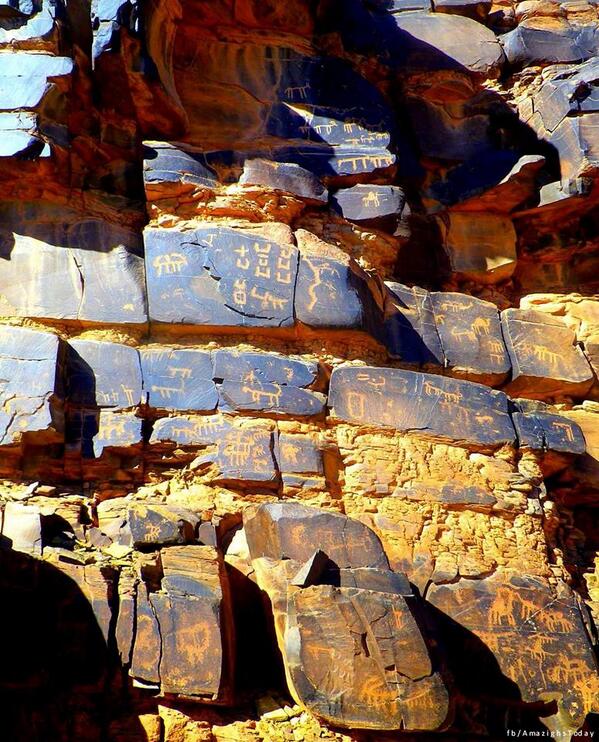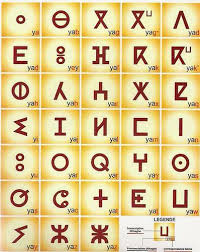
Ancient Tifinagh (#Amazigh alphabet) rock engravings in "La vallée du Draa" in Morocco
| Berber |
| Quick Facts |
| Type | Consonantal Alphabetic |
| Genealogy | Proto-Sinaitic/Phoenician/Aramaic |
| Location | Africa |
| Time | 3rd century BCE to 3rd century CE |
| Direction | Bottom to Top, Right to Left |
|  |
|
The Berbers is a large and ancient group of North African people related by language and culture, inhabiting Mediterranean areas stretching from Egypt to the Canary Islands as well as regions south of the Sahara such as Niger and Mali. Their first forays into recorded history were references by Phoenicians and Romans, but by the 3rd century BCE they started inscribing texts in their own script. Fortuitously, some of the inscriptions are bilingual, either Berber-Punic or Berber-Latin texts, which facilitated the decipherment of the Berber script. Names and certain words identified from these texts can be shown to belong to a Berber language, but linguists cannot link the written language to any of the dozen modern Berber languages spoken in North Africa. As such there are still gaps in the understanding of ancient Berber texts.
The Berber script is a consonantal alphabet, or abjad, most likely adopted from the Punic variant of the Phoenician script. One interesting feature is that even though it inherited the Phoenician right-to-left direction, more commonly it is written in a unique bottom-to-top direction. The letters change shape depending on the direction of writing, as illustrated in the following table.

The Berber script disappeared from monumental usage after the 3rd century CE. However, it survived in a highly private setting and became the modern Tifinagh script.
 |
 Ancient Tifinagh (#Amazigh alphabet) rock engravings in "La vallée du Draa" in Morocco
Ancient Tifinagh (#Amazigh alphabet) rock engravings in "La vallée du Draa" in Morocco
No comments:
Post a Comment